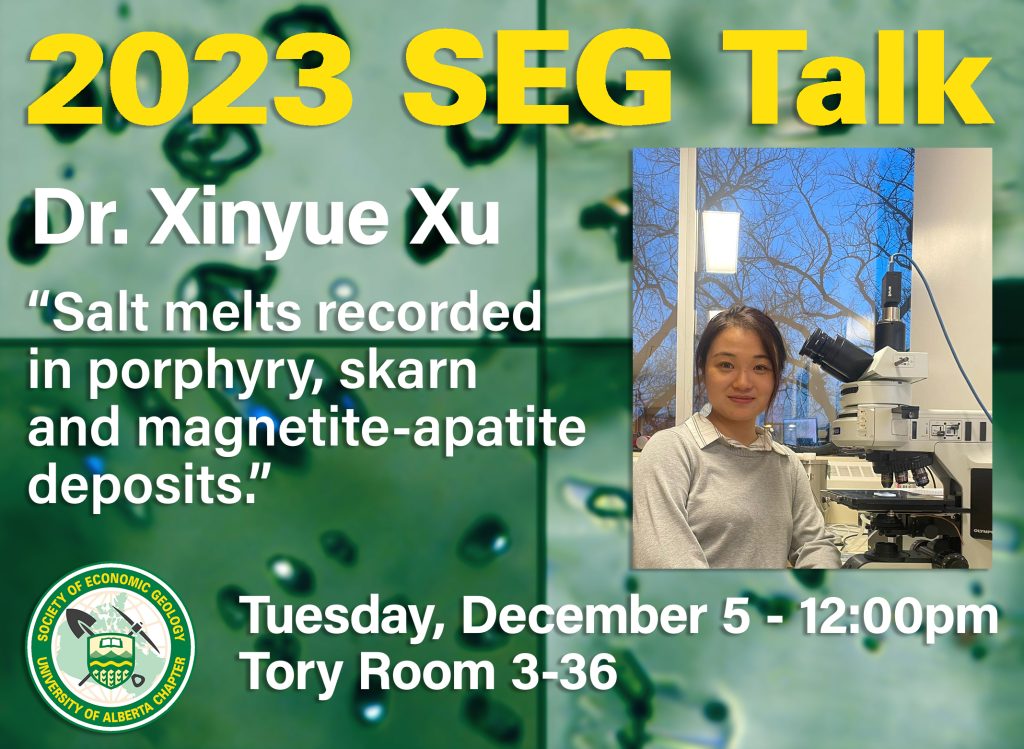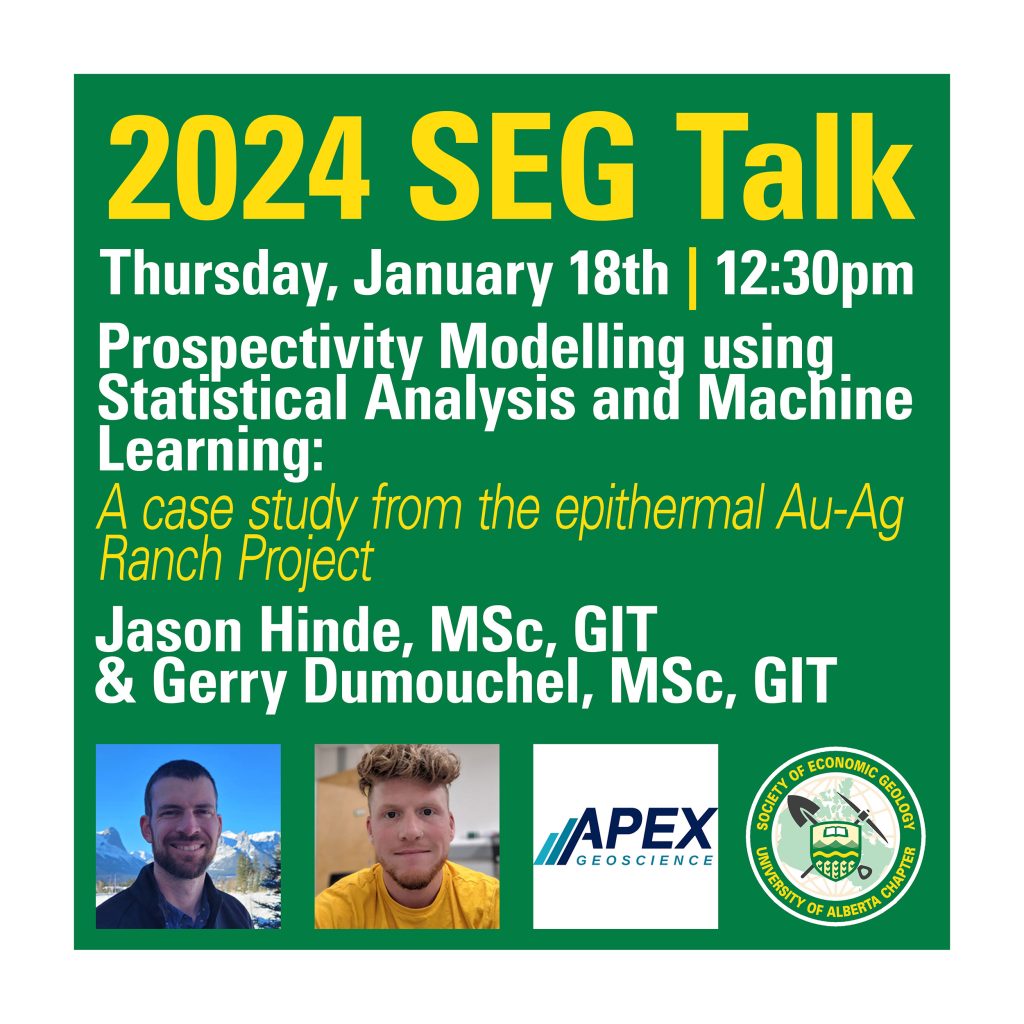Nov 2nd, 2023: “Fundamentals of Resource Estimation” by Garth Kirkham, P.Geo., FGC, SEGF, FCIM, Kirkham Geosystems, Ltd.

Abstract:
The significant components of resource estimation pertains to data management, data analysis, geological interpretation and modelling, geostatistics, quality assurance/quality control, change of support, block model interpolation, resource estimation and reporting. This lecture will focus on data compilation and integration, data analysis, creation of ore body models and estimating methodologies along with
software systems for mineral resources. In addition, a review of common pitfalls, do’s and don’ts along with examples of good and bad practice will be discussed. The following are some of the outcomes that will be touched upon:
• Develop an understanding of the terminology, concepts and methodologies related to mineral resource estimation.
• Assess datasets such as drillhole collars, surveys, assays, lithologies, topography, specific gravities, and the importance as the basis for reliability and confidence.
• Basic statistical analysis and understand the implications of analytical results.
• What are geologically realistic models used to constrain mineral resource estimations and develop an understanding of limitations.
• Assess data quality and certainty based on factors including drill hole spacing, data vintages, lithological control and variability.
• Discuss the merits of resource estimation methodologies and techniques.
Dec 5th, 2023: “Salt melts recorded in porphyry, skarn and magnetite-apatite deposits” by Dr. Xinyue Xu, University of Alberta

Abstract:
Silicate melt is a well-established component of magma within the Earth’s crust and mantle. However, a distinct type of salt melt, characterized by markedly different physical and chemical properties, remains elusive in geological processes. This study highlights the pervasive involvement of a unique low-viscosity, low-density salt melt as a novel ore-forming agent in porphyry, skarn, and magnetite-apatite deposits across more than 20 global locations. Melt and fluid inclusion studies reveal the widespread presence of water-free polycrystalline salt melt inclusions dominated by sulfates, chlorides, carbonates, and variable proportions of calc-silicates, phosphates, and iron ± titanium oxides, with remelting occurring within the temperature range of 285 to 1200 °C. These salt melt reflect the products of extensive assimilation and anatexis between silicate melt and sedimentary strata, or extreme magmatic fluid exsolution. Moreover, the observed immiscibility among silicate melt, salt melt, and aqueous fluids in each setting contributes to the enrichment and migration of metals to varying degrees and in diverse manners. This study presents a novel perspective on the origin of porphyry, skarn, and magnetite-apatite deposits, providing extensive and exceptional evidence for the central role of an unexpected fluid—salt melts.
Jan 18th, 2024: “Prospectivity modelling using statistical analysis and machine learning: a case study from the epithermal Au-Ag Ranch project” by Jason Hinde, M.Sc., G.I.T. and Gerry Dumouchel, M.Sc., G.I.T., APEX Geoscience Ltd.

Abstract:
“Data overload” is a common problem faced by geologists in the modern era of exploration. Many projects have datasets comprising hundreds of thousands of individual data points that can cross between multiple scientific disciplines. Exploratory data analysis (EDA) using statistical and machine learning methods can allow geoscientists to consider hundreds of variables simultaneously and see trends in data that would otherwise be difficult to find. In the context of the high sulphidation epithermal Ranch deposit, an EDA undertaken by the APEX Geoscience team revealed key geological characteristics of the property and facilitated the use of prospectivity models to make predictions on potential locations of new mineralized zones.
Feb 8th, 2024: “How to Date with Danny” by Dr. Danny Hnatyshin, Natural Resources Canada & Geologic Survey of Canada

Abstract:
Our modern world requires a diverse set of commodities (e.g. Cu, Zn, Li, REE, etc…) which themselves come from a very diverse set of deposit types. One of the key questions that is asked regardless of the deposit type is: “Why did mineralization take place?” Knowing when minerals formed is often a foundational requirement for developing and testing a model of ore formation. This is not only academically interesting but is critical for de-risking exploration and guiding future research. Therefore, to make (hopefully!) this important field of research more accessible, this presentation is designed to introduce the general what/why/how of age dating ore deposits.
Specifically, I will address:
– What questions can potentially be solved by applying age dating techniques?
– How does age dating even work?
– What techniques are there?
– What are some key minerals that are applicable to age dating ore deposits?
I will also overview the thought process that went into designing some of my past and current projects that are designed around the dating of ore/mineral deposits. This will include:
– Application of the Re-Os system in sulfide-bearing ore deposits
– Application of the U-Pb system in Li-bearing pegmatites
